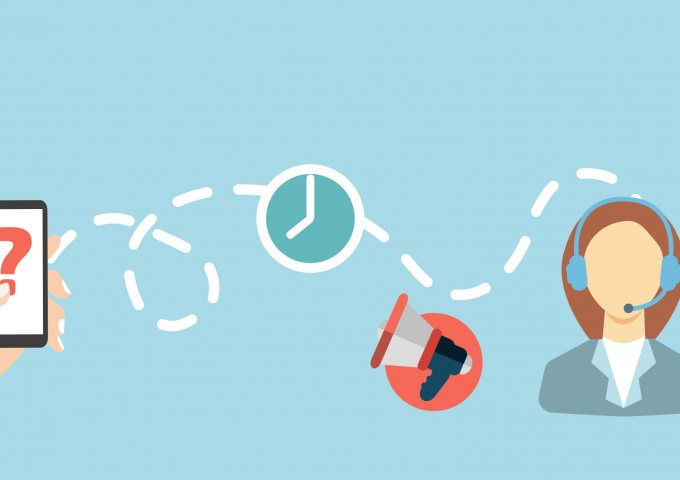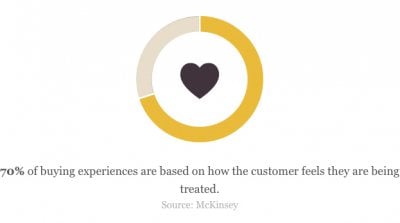Customer service as a marketing tool


One of the most commonly used marketing strategies is to provide a good service. Not only ‘products’ and ‘pricing’ are USPs (Unique Selling Points), ‘service’ is equally important. But what exactly does ‘service’ refer to and how do you use it effectively? This post tells you everything you need to know. What’s a good service? And which little tricks can you use to achieve the excellent service your customers deserve and to make your online store truly stand out?

First things first, what is service?
Service is what you provide your customers with to ensure they are satisfied. An example is a very fast delivery or efficient problem-solving. In this blog post I will focus mainly on the latter – quite logical, you’re probable thinking...
Yes, it may seem logical, but the MyOnlineStore helpdesk team often see that online merchants have difficulty finding the best way to provide the right service. Consumers often ask us to find a solution for issues they’re having with an online store we host, which would have been unnecessary if the online merchant had provided the right service from the start. Business is a bumpy road, there’s no way around it, but if you do things right, it can work to your advantage.
Genuinely wanting to help
When providing a service, the key aspect is you genuinely wanting to help your customers and actually showing this too. That requires a lot of empathy. After all, you need to be able to walk in your customers’ shoes.
You also need to provide a meaningful service to your customers, so you must be in a position to take (minor financial) decisions, such as whether or not to accept the return of a used product. If you are not in a position to take such decisions, you need to swiftly pass on the message to the person who is. If you are running your online store on your own, you have to assume a lot of different responsibilities. That can be tough, especially when faced with problems linked to specific products or in case of high shipping or courier costs. You need to make sure you don’t take out your frustrations on your customers.
Identify problems and expectations
How can you get a good overview of a problem and your customer’s expectations? Although it may seem straightforward, it’s anything but. After all, it’s not always clear what’s going on.
An example: A customer contacts you because they’ve ordered an item of clothing in a size that’s too small. We can identify three causes for this: (1) the customer has ordered the wrong size; (2) the item does not fall under the standard sizing table; (3) the online merchant – that’s you! – has supplied the wrong size.
In the first case, the customer expects that the item can be exchanged if they pay the shipping costs. In the second case, the customer probably expects that the item can be exchanged without the need to pay additional shipping costs. In the third case, the customer expects it to be exchanged free of charge, together with an apology.
Redefine your expectations
It’s important to realize that service is actually all about defining and redefining expectations. When someone contacts you, they expect you to react and/or deal with the issue in a certain way. As a result, you need to have a good view of the situation without relying too much on the customer’s or your own assumptions and emotions, which might need to be redefined.
A concrete example? If a product is not available from stock, the customer needs to understand it won’t be delivered to their door the following day, so it’s important to give them a realistic idea of when it will be delivered. This may sometimes lead to a purchase elsewhere. Remember that’s always better than a frustrated customer waiting for a delivery for two long weeks. Chances are, in that case, the customer will never place another order in your store. Research shows that a negative experience with customer service generally reaches twice as many people as a positive one.

Customer interaction
A good tool to redefine your customer’s expectations to a scenario you can attain is the CPA technique (Cause, Prognosis, Advice), which can be used when dealing with both queries and problems. First of all, you need to find out what the issue or question is. In most cases, your customer will tell you. Now it’s your turn to set to work. Depending on the problem, you can come up with several proposals (accept a product return, repair the product etc.) and you need to be aware of the prognoses once the customer has picked a proposal. Then you advise what you feel is the best option.
A few concrete examples:
Question: “I would like to receive that blue blouse in a size M as soon as possible, but it’s sold out now. Yesterday it was still available.”
Answer: “Hello, <customer name>,
Cause: Unfortunately, we sold the last blue blouse in a size M today. It’s one of our most popular items and stocks are limited.
Prognosis: We are receiving new stock later this week.
Advice: Keep an eye on our website in the next few days. I will also contact you when this blue blouse in a size M is once again available. Is there anything else I can help you with?”
Or:
Question: “When will my order be delivered? I was expecting it to arrive yesterday.”
Answer: “Hello, <customer name>,
Cause: I have been informed that the postman tried to deliver your parcel yesterday, but no one was home.
Prognosis: Generally, the postman then tries to deliver again the next day.
Advice: I suggest you check the current status of your order using this track-and-trace code. Should you have any more problems, don’t hesitate to contact me again.”
As you can see, the CPA technique is a simple, but very clear communication tool. It can also be used on the phone, in chat and WhatsApp messages, even in just a few short sentences: “I can see that the invoice is not quite right. This was caused by an administration error, which I will rectify straight away. You will receive a new invoice by email within 5 minutes. I apologize for the inconvenience.”

“A customer you have helped solve a problem efficiently is often more loyal than someone who has never relied on your customer care.”
The value of customer care
When customers contact you, you always have an opportunity to win them over. If you help them or solve any problems efficiently, you leave a good impression. You want these customers to talk about your business. They then become ‘promoters’, ‘super promoters’ or even ‘ambassadors’. Research shows that a customer you have helped solve a problem efficiently is often more loyal than someone who has never relied on your customer care.
In a nutshell, ensure you always communicate clearly and honestly, and show your customers that you genuinely want to help them solve their problems. Consider these problems from an objective point of view and try not to let your customers’ story or emotions influence you. Find out what their expectations are and make sure they are realistic. Then find an honest, workable solution.

